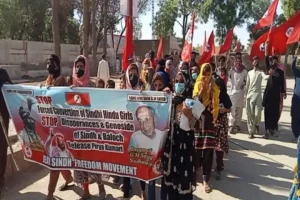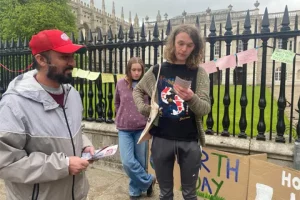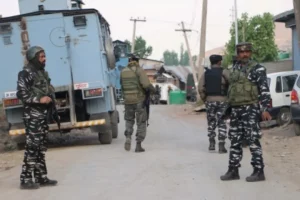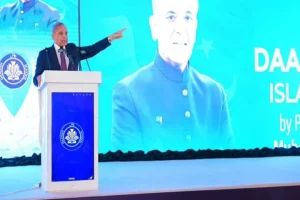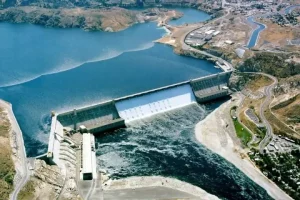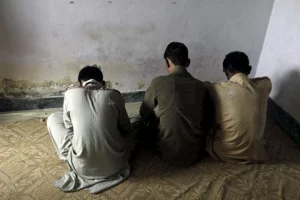The killing of three officers of the Indian Army and the Jammu and Kashmir, including a Colonel and a Major, in an ambush in the Kokernag forest cover in Kashmir’s Anantnag district on Wednesday, 13 September, has occurred after a series of identical attacks on the Army in Jammu’s border districts of Poonch and Rajouri.
The Commanding Officer of Rashtriya Rifles 19th battalion, Col Manpreet Singh was leading a counterinsurgency operation in the forest area of Gadol, along with Major Ashish Dhonchak and Deputy Superintendent of the Jammu and Kashmir Police in Kokernag, Humayun Muzamil Bhat, when an unknown number of well-trained and heavily armed militants attacked them with precision. All the three officers reportedly died on the spot.
Apparently trapped in the bushes, evacuation of the officers remained impossible for several hours due to the continual firing from vantage positions. Officials are now enquiring if the militants had deliberately exposed themselves in a hamlet—sure that someone would pass on the information to the troops who would launch an operation and fall in the trap.
The Resistant Front (TRF), which is believed to be a front for Lashkar-e-Tayyiba, claimed that its ‘Falcon Squad’ had out the strike in Kokernag Kashmir to avenge the killing of Muhammad Riyaz of Poonch.
Mohammad Riyaz aka Abu Qasim of LeT, a resident of Poonch who was wanted in several militancy related cases in his district, was shot dead by an unidentified gunman, wearing a crash helmet, inside a mosque at Rawalakot, PoK, on 10 September. It establishes a link between Rawalakot (PoK), Poonch (Jammu) and Kokernag (Kashmir).
Significantly, the casualties in Kokernag have been taken when a high profile Defence symposium was in progress at IIT Jammu and the same had been addressed, among others, by the Union Defence Minister Rajnath Singh, and several top ranking Army officers and the Lietenant Governors of J&K and Ladakh. As usual, there were claims of the restoration of peace and the terrorism having been decisively wiped out.
This is the second consecutive ambush attack of this pattern in the southern Kashmir foothills of the Pirpanjal mountain in the last 40 days. Three soldiers— Havaldar Babulal Haritwal, Signalman Vala Mahipalsinh Pravinsinh and Rifleman Waseem Sarwar—were similarly attacked and killed in an ambush in the Halan Manzgam forest area of the adjoining Kulgam district on 4 August.
Unusually this year, on 21 August, a group of militants in the cordon-and-search operation at Parigam in the adjoining Pulwama district escaped after leaving two personnel wounded.
This fresh pattern of attacks is completely in contrast to hundreds of the successful counterinsurgency operations by the Police and security forces in the last over five years. On 9 August 2023, Minister of State for Home, Nityanand Rai informed Rajya Sabha that 1002 terrorists had been killed in Jammu and Kashmir between 2018 and 2022. Most of the 308 security forces personnel killed in this period had fallen in 2018 and 2019.
The three incidents of 4 August, 21 August and 13 September in the Kashmir valley are unusual in the sense that the Police and the security forces have maintained continued pressure over the militants in the last over three years. Their entire local cadre has been wiped out in the last three years. As the leadership of all outfits has been neutralised, Basit Dar of Kulgam is the only prominent militant in the field.
No Commanding Officer died in any attack or encounter with militants in the Kashmir valley after 5 soldiers—Col Ashutosh Sharma, Major Anuj Sood, Naik Rajesh, Lance Naik Dinesh of Rashtriya Rifles 21 Bn and Sub Inspector Sageer Ahmad Pathan of J&K Police—were killed in an encounter in Kupwara on 3 May 2020.
In most of the encounters and CI operations, half-baked local militants with no professional guerrilla training died virtually without offering any resistance. Even the well-trained Jaish-e-Mohammad and LeT cadres failed to cause any significant damage to the security forces and Police. Most of their attacks were directed on the local civilians or Police officials discharging their non-combatant duties.
Contrarily the pattern of the three incidents in Kulgam, Pulwama and Anantnag is different. It is apparently the same as adopted by well-trained guerrilla cadres operating in Jammu’s Poonch, Rajouri and Reasi districts, contiguous to Kulgam and Anantnag on the southern side of the Pir Panjal, since August 2021. As many as 24 soldiers, including officers, were killed in five particular attacks in the two border districts by the militants of professional training without suffering any damage.
According to senior Army officers at the Northern Command headquarters, 46 militants have been killed in different encounters in Jammu and Kashmir in the last 8 months of the current year. Only 9 of them were local militants. By these indications, it is clear enough that the local indigenous militancy has been wiped out almost completely and the security forces’ current and future challenge are the Pakistan-trained foreigners.
In the wake of a sustained campaign against the militant harbourers and over-ground workers in J&K in the last four years, providing shelter and hideouts to terrorists has become virtually impossible. Most of these cadres have been arrested and booked in criminal cases. Many of their properties have been attached. Many of them have been dismissed from government services. Many more, including their family members, have been denied jobs and passports.
This pressure from the government has obviously forced the militants, including their fresh inductions and deployments, to set up hideouts in caves and crevasses of the Pirpanjal forests. This is completely different from the type of the militants which the security forces have dealt in the last 5 years in Kashmir.







